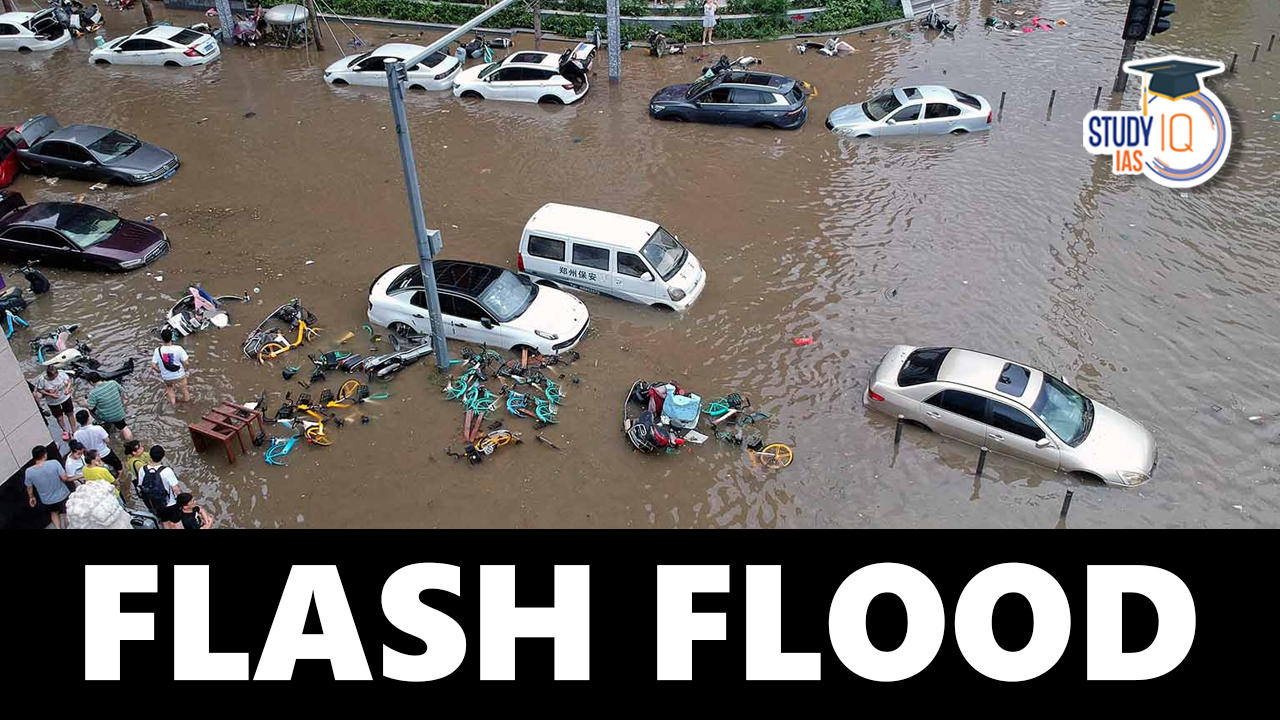Table of Contents
Flash Floods
Flash Floods: Flash floods are the most dangerous kind of floods, because they combine the destructive power of a flood with incredible speed. When the amount of severe rainfall surpasses the soil’s capacity to absorb it, flash floods happen. They also happen when water fills typically dry creeks or streams or when enough water builds up for streams to overflow their banks, leading to quick elevations in water levels.
What is Flood ?
Flooding is the overflow of water onto typically dry ground. Floods can occur as a result of strong rains, incoming waves from the ocean, rapid snowmelt, or the failure of dams or levees. Even a few inches of water can cause destructive floods, or the water can reach a house’s roof. Floods can happen suddenly or gradually over a long period of time, lasting for days, weeks, or even longer. Of all weather-related natural disasters, floods are the most prevalent and extensive.
Definition of Flash Flood
Flash floods are defined as floods that occur within six hours of severe rainfall or for another cause. Flash floods, however, can occasionally happen minutes or a few hours after a heavy downpour. They are basically quick flooding of low-lying places, such as washes, rivers, dry lakes, and depressions, is known as flash floods. Flash floods are more dangerous than typical floods in terms of potential damage due to their unpredictable nature and brief duration.
Causes of Flash Flood
Flash floods are most common in arid places that have just received precipitation, although they can occur anyplace downstream from the origin of the precipitation, even many kilometres away. Cause of Flash flood are mentioned below:
- In just four months (June to September), about 75% of the total rainfall falls; during these months, rivers have a tremendous discharge.
- It could be brought on by a hurricane, a tropical cyclone, a violent thunderstorm, or meltwater from ice or snow running over ice sheets or snowfields.
- Flash floods can also happen as a result of levee or dam breaks, mudslides, or debris flows.
- Flash floods have also happened following eruptions in locations on or close to volcanoes when glaciers melted from the extreme heat.
- Intensity of the precipitation, location and distribution of the precipitation, terrain and land use, vegetation kinds and growth/density, soil type, and soil water content all affect where and how quickly the flash flooding may occur.
- Orissa, West Bengal, and Andhra Pradesh’s coastal regions experienced depressions and cyclonic storms.
- The frequency/number of the aforementioned phenomena have grown due to climate change and global warming.
- Wildfires may be followed by the onset of flash floods. Forests and other types of vegetation are destroyed by wildfires, which weakens the soil and reduces its ability to allow water to permeate.
Effects of Flash Floods
Due to the sudden onset and quick water movement of flash floods, they are particularly hazardous. Though it provides little to no protection from being washed away, having a car can make people overconfident and less likely to avoid the flash flood. More than half of the fatalities associated with flash floods involve motorists who are swept away in their vehicles while attempting to cross flooded intersections. The majority of SUV-sized vehicles can be carried away by just 2 feet (0.61 m) of water. The effects of Flash Floods are:
- It has an effect on the natural environment, including pollution, agriculture, vegetation, and geomorphology.
- Human population is affected (entrapments, injuries, fatalities).
- Among other classes of floods (such as riverine and coastal), they also have the highest mortality rate (measured as the number of deaths per many people impacted).
- With more than 5,000 lives lost each year, flash floods are among the deadliest natural disasters in the world. They also have a substantial negative impact on society, the economy, and the environment.
Government Initiatives on Flash Flood
Check the government initiatives on flash floods in India as mention below:
Flash Flood Guidance Services
The India Meteorological Department (IMD) developed a reliable system to deliver the required products in real-time to support the creation of warnings for flash floods about 6–12 hours in advance at the watershed level for the flash flood-prone South Asian countries, namely India, Nepal, Bhutan, Bangladesh, and Sri Lanka.
South Asian Flash Flood Guidance System (FFGS)
- The South Asian FFGS was introduced by the India Meteorological Department (IMD).
- It is intended to support emergency response teams.
- Aids in the prompt creation of evacuation preparations by governments before flooding actually occurs.
























 WhatsApp
WhatsApp